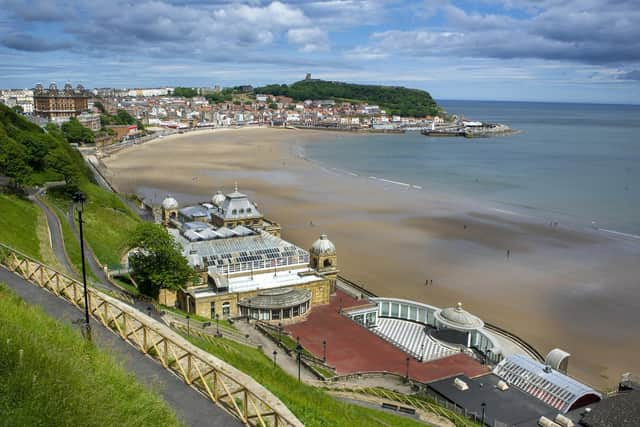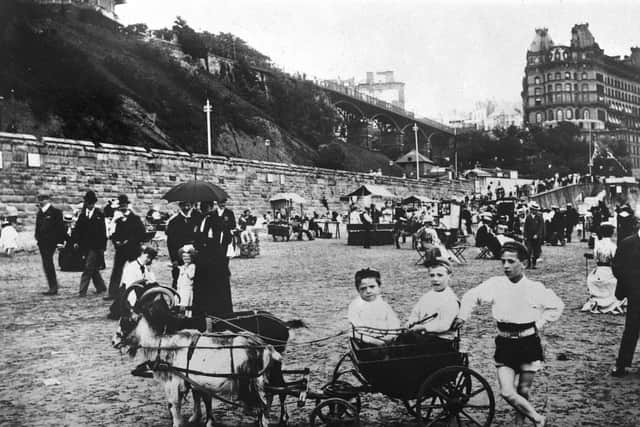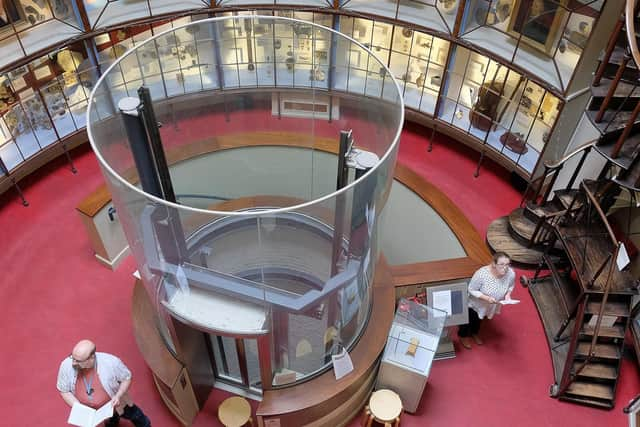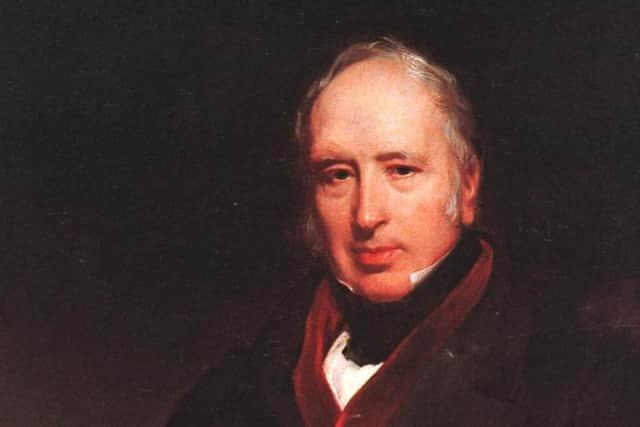Scarborough is a seaside town of splendour with a rich history of remarkable characters
In Scarborough we know that it’s ours. For starters, it’s surely one of the most naturally blessed places in the country, with its two sweeping bays nipping the waist of a dramatic headland, all topped by a ruinous 12th-century castle.
But it’s not just the geographical location of the town known as the world’s first seaside resort that has sent people flocking here for centuries. It’s also about the colourful and seemingly never-ending parade of brilliant – and often wildly eccentric – characters who have chosen to make Scarborough their home.
Advertisement
Hide AdAdvertisement
Hide AdLet’s scoot back in time 300 years, for instance, to find a town that was a magnet for the great and the good of the early Georgian period seeking a cure-all for the many ailments caused by post-Restoration indulgence. The Spa waters, rich in natural minerals, had been discovered a century earlier, and by the early 18th century, Scarborough was very much the place to be – a reputation enhanced in no small way by the “Governor” of what was then known as the Spaw, Richard “Dicky” Dickinson.


Dicky, who rented the venue from Scarborough Corporation in the early 1700s, suffered from acromegaly, a syndrome in which the body produces excessive growth hormone, and which can result, as in his case, in severe disfigurement.
But he was clearly a powerful personality and turned his misfortune to his advantage, taking the upper classes who frequented the Spaw by storm, and fleecing them for every penny he could. He kept a pet monkey and a fox to enhance his reputation as an eccentric.
Dicky had, it seems, a somewhat base sense of humour. He was famed for outrageous jokes at the expense of his patrons and their often embarrassing bodies – and most of them lapped up his rudeness. He became such a celebrity that bawdy poetry was written about him and his face was carved onto walking sticks. Google him today, and you’ll still find for sale antique brass door knockers bearing his likeness.
Advertisement
Hide AdAdvertisement
Hide AdIt’s hard to see Dicky fitting into the rather rarefied place of learning that Scarborough had become less than a century later. The Age of Enlightenment was with us, and for much of the 19th century, the town was a hotbed of scientific innovation.


In the early 1800s, the Scarborough Philosophical Society was the spiritual home to some of the brightest and most enquiring minds in the country. Its president was Sir John Johnstone, of Hackness Hall, who was only 30 when his great legacy, the Rotunda Museum, was opened in 1829.
One of the first purpose-built museums in the world, it was constructed using stone from his estate. Designed by York architect Richard Sharp, its circular shape was suggested by Sir John’s land steward William Smith – who just happened to be the man we now know as the “father of English geology” and the creator of “the map that changed the world”.
Smith had moved to Scarborough in 1819 after spending 11 weeks in King’s Bench debtors’ prison. Ironically the publication four years earlier of his famous map, which showed for the first time the delineation of geological strata and is still influential today, had contributed to his debt.
Advertisement
Hide AdAdvertisement
Hide AdAround the same time, the great George Cayley was hard at work in Brompton, a village on the outskirts of Scarborough, on dreams of flight.


Born on the steep Scarborough street called Paradise, Cayley is also known worldwide as a scientific innovator and the “father of aeronautics”.
As a young man in the late 1700s, Cayley had grasped the principles of flight. But it wasn’t until 1853, just four years before his death, that he launched his pride and joy, a “governable parachute”.
It’s believed Cayley, nearly 80 at the time, was keen to pilot the craft himself – but that idea was vetoed by his very sensible wife. Instead the privilege fell to his coachman, John Appleby, who had made the mistake of showing just a bit too much interest in the project.
Advertisement
Hide AdAdvertisement
Hide AdAfter being launched into the air by a galloping horse – in much the same way a modern glider is launched by a powered aircraft – it flew 900 feet across Brompton Dale before crashing, much to Appleby’s disgruntlement: legend has it that he promptly resigned.


While Cayley was flinging coachmen skywards, Henry Vandyke Carter was studying medicine. The son of the well-known marine painter Henry Barlow Carter, he was born in Scarborough in 1831 and spent his youth in the town before heading off to St George’s Hospital in London where he met fellow student Henry Gray.
The two young Henrys bonded and, as they attended post-mortems and did the rounds of the hospital wards together, they came up with an idea that was to become one of the most groundbreaking books in medical history.
Together they spent 18 months working on their plan for an accessible and affordable anatomy textbook for medical students, researching it by dissecting bodies from the workhouse and hospital mortuaries. The result was first published in 1858 by London publisher John William Parker.
Advertisement
Hide AdAdvertisement
Hide AdOriginally called Anatomy: Descriptive and Surgical, then Gray’s Anatomy: Descriptive and Applied, this landmark volume has been associated with Henry Gray since its first publication.
But it’s actually Scarborian Carter’s graphic illustrations of dissected corpses, which leave absolutely nothing to the imagination, that most of us associate with the title – original publisher Parker recognised the power of the pictures, and was keen to give the pair joint credits, a plan which fell apart when Henry Gray objected.
After a lifetime in medicine, during which he made important contributions to tropical medicine, Carter returned to his hometown to live near his sister Lily. He died in 1897.
A blue Scarborough Civic Society plaque marks the house where Carter died, on Belgrave Crescent, just on the edge of the town centre, and only a couple of doors down from one of Scarborough’s biggest GP practices.
Advertisement
Hide AdAdvertisement
Hide AdThe 20th century brought glamour to the town, much of it swirling around the Laughton family – hotelier Tom Laughton and his brother Charles, who was Hollywood royalty. In the 1930s, the Laughtons brought the brightest and the best to Scarborough.
They were friends with Graham Greene, hosted Winston Churchill when he attended political conferences in the town – and Tom was a keen participant in the sport of tunny (or tuna) fishing, which attracted wealthy big game fisherman including, it’s reputed, movie star John Wayne (although there seems to be no hard evidence of that).
It seems likely that the family would have attended the tennis tournaments that took place at Scarborough Tennis Club, widely regarded as the “Wimbledon of the North” and attracting such greats as Pancho Gonzales, Ken Rosewall and Fred Perry.
By the 1950s, Tom was an active supporter of the newly formed Scarborough Theatre Trust, which helped Stephen Joseph to set up the UK’s first theatre-in-the-round company. The theatre is still a flagship cultural attraction in the town, and still premieres all the new work by its retired director emeritus, Sir Alan Ayckbourn.
Advertisement
Hide AdAdvertisement
Hide AdAnd with the recent announcement of a £20.2m economic boost for the town as part of the Government’s Towns Fund – a windfall hailed by Scarborough Council leader Steve Siddons with the aspirational words “the stars have aligned, thankfully for us” – the town marches on into the 21st century with a renewed sense of purpose.